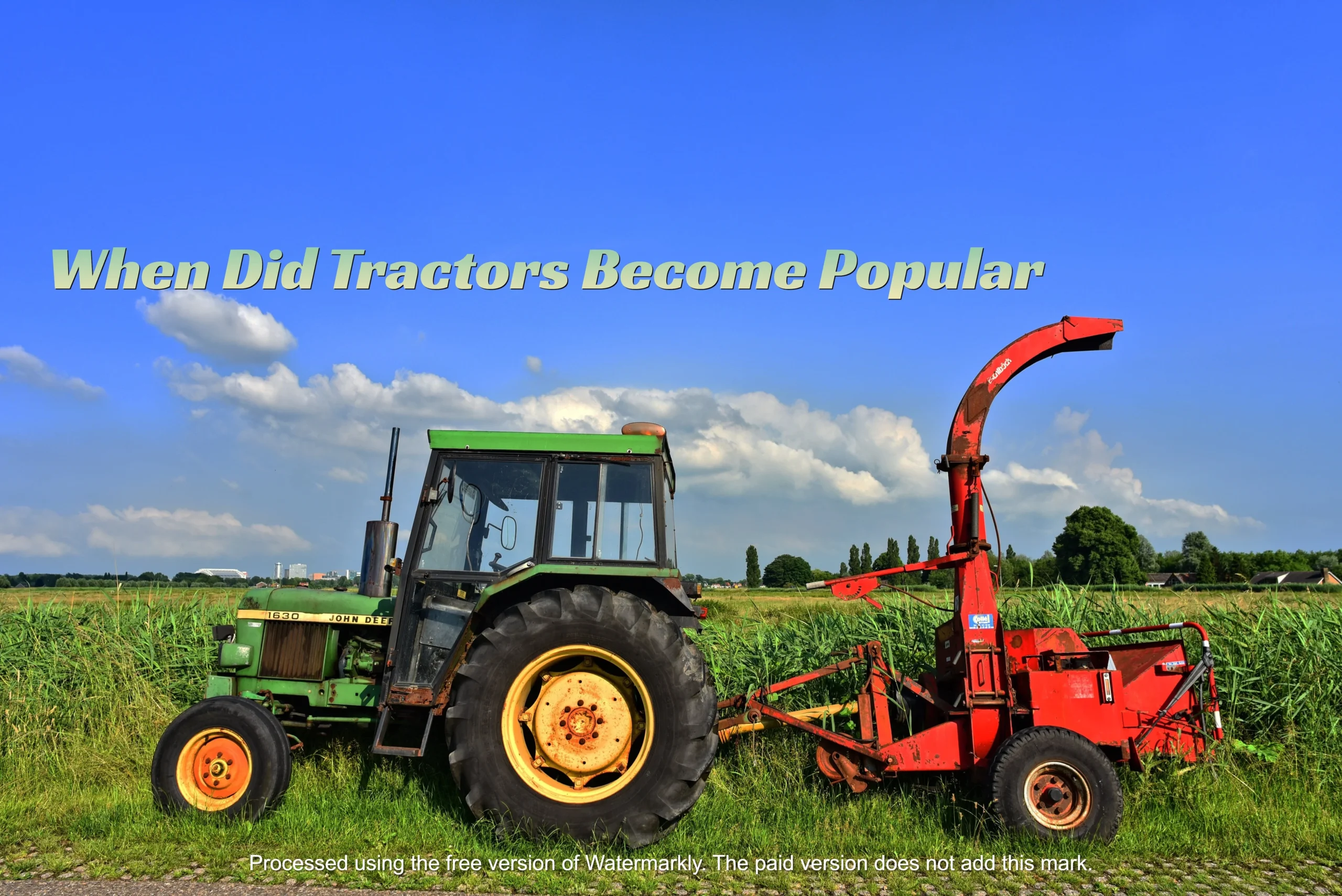Tractors became popular in the early 20th century, especially during the 1920s, as they revolutionized farming by replacing animal labor with mechanized power, increasing efficiency and productivity on farms.
The Game-Changing Moment When Tractors Took the Lead
Introduction
In the vast tapestry of human history, agriculture has been a constant thread, weaving through the fabric of civilization. As societies evolved, so did the tools used in farming, with one of the most significant breakthroughs being the advent of tractors. In this article, we’ll journey through time to explore the fascinating story of when tractors became commonplace in agriculture.
Early Attempts at Mechanization
In the early days, farmers relied on human and animal power to cultivate the land. Handheld tools and draft animals were the primary means, but these methods were labor-intensive and limited in efficiency. As agricultural practices expanded, the need for a more efficient and powerful alternative became evident.
The Rise of Steam Power
The 18th century saw the rise of the steam engine, a transformative invention that would soon find its way to the fields. Early steam-powered machines were large and cumbersome, but they marked the first steps toward mechanized agriculture. However, their adoption was slow due to various challenges.
The Impact of the Industrial Revolution
The Industrial Revolution brought about significant advances in manufacturing, enabling the mass production of machinery. This shift paved the way for more accessible and affordable farming equipment, setting the stage for the birth of the tractor.
The Birth of the Tractor
In the late 19th century, the first true tractors began to emerge. Inventions like the traction engine laid the groundwork for what we recognize as tractors today. These early machines were a far cry from the sleek, powerful tractors we see in modern fields, but they were a crucial starting point.
Tractors in the Early 20th Century
The early 20th century witnessed the gradual adoption of tractors in agriculture. However, farmers faced resistance, as the new technology required a shift in traditional farming practices. The transition was not without challenges, but the benefits of increased efficiency and productivity gradually won over skeptics.
World War II and Tractor Technology
The outbreak of World War II saw tractors being repurposed for wartime needs. This period also catalyzed technological advancements in tractor design, making them more versatile and capable. Post-war, the demand for tractors surged, leading to a boom in production.
Post-War Boom and Tractor Popularity
The post-war era brought about economic recovery and increased demand for agricultural products. Tractors played a pivotal role in meeting this demand, becoming an indispensable tool for farmers worldwide. The once-niche technology became commonplace in fields, transforming the agricultural landscape.
Technological Innovations in Tractors
As time progressed, tractors underwent significant advancements. The introduction of hydraulic systems and the shift from gasoline to diesel engines marked crucial milestones. These innovations enhanced the power, efficiency, and versatility of tractors, further solidifying their place in modern agriculture.
Tractors in the Modern Era
In the 21st century, tractors continue to evolve. The integration of GPS technology allows for precision farming, optimizing resource use and increasing yields. Smart agriculture practices leverage data and connectivity, ensuring that tractors remain at the forefront of efficient and sustainable farming.
Social and Economic Impact
The widespread use of tractors has not only transformed farming practices but also influenced rural communities. The shift from manual labor to mechanized farming has altered the socio-economic dynamics of agricultural regions, impacting the lives of those dependent on the land.
Challenges Faced by Tractor Technology
While tractors have revolutionized agriculture, they are not without challenges. Environmental concerns, including fuel emissions and soil compaction, raise questions about the long-term sustainability of current tractor technologies. Additionally, the rapid pace of technological advancements poses the risk of rendering existing tractors obsolete.
Future Trends in Tractor Development
Looking ahead, the future of tractors holds exciting possibilities. Autonomous tractors equipped with artificial intelligence may redefine farming practices. Integration of cutting-edge technologies promises increased efficiency, reduced environmental impact, and improved overall sustainability.
Conclusion
In conclusion, the journey of tractors from humble beginnings to modern-day workhorses is a testament to human ingenuity and the constant quest for improvement. Tractors have become an integral part of agriculture, shaping the way we cultivate the land. As we navigate the complexities of the 21st century, tractors continue to play a pivotal role in ensuring food security and sustainable farming practices.
FAQs
- What was the first tractor ever built? The first recognized tractor is often attributed to the invention of the traction engine in the late 19th century.
- How did tractors revolutionize agriculture? Tractors revolutionized agriculture by significantly increasing efficiency, reducing labor intensity, and enabling larger-scale farming.
- Are tractors still relevant in today’s high-tech world? Absolutely. Tractors remain crucial in modern agriculture, adapting to new technologies for precision farming and sustainability.
- What challenges do farmers face with modern tractors? Farmers face challenges such as environmental concerns, fuel emissions, and the need to adapt to rapidly evolving tractor technologies.
- How has tractor technology impacted the environment? Tractor technology has both positive and negative environmental impacts. While it enhances efficiency, concerns about emissions and soil compaction need address.
/when-was-the-tractor-invented

